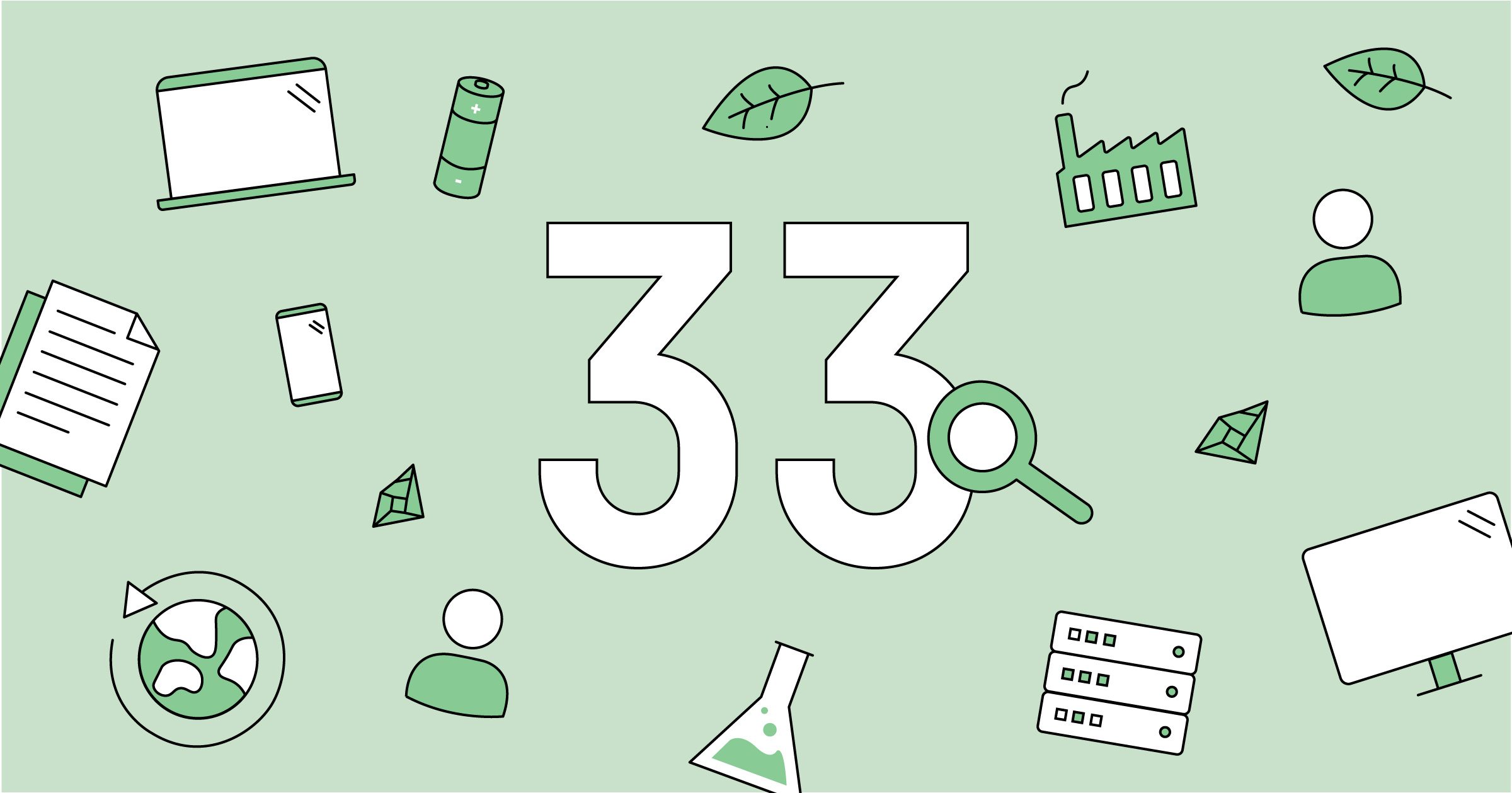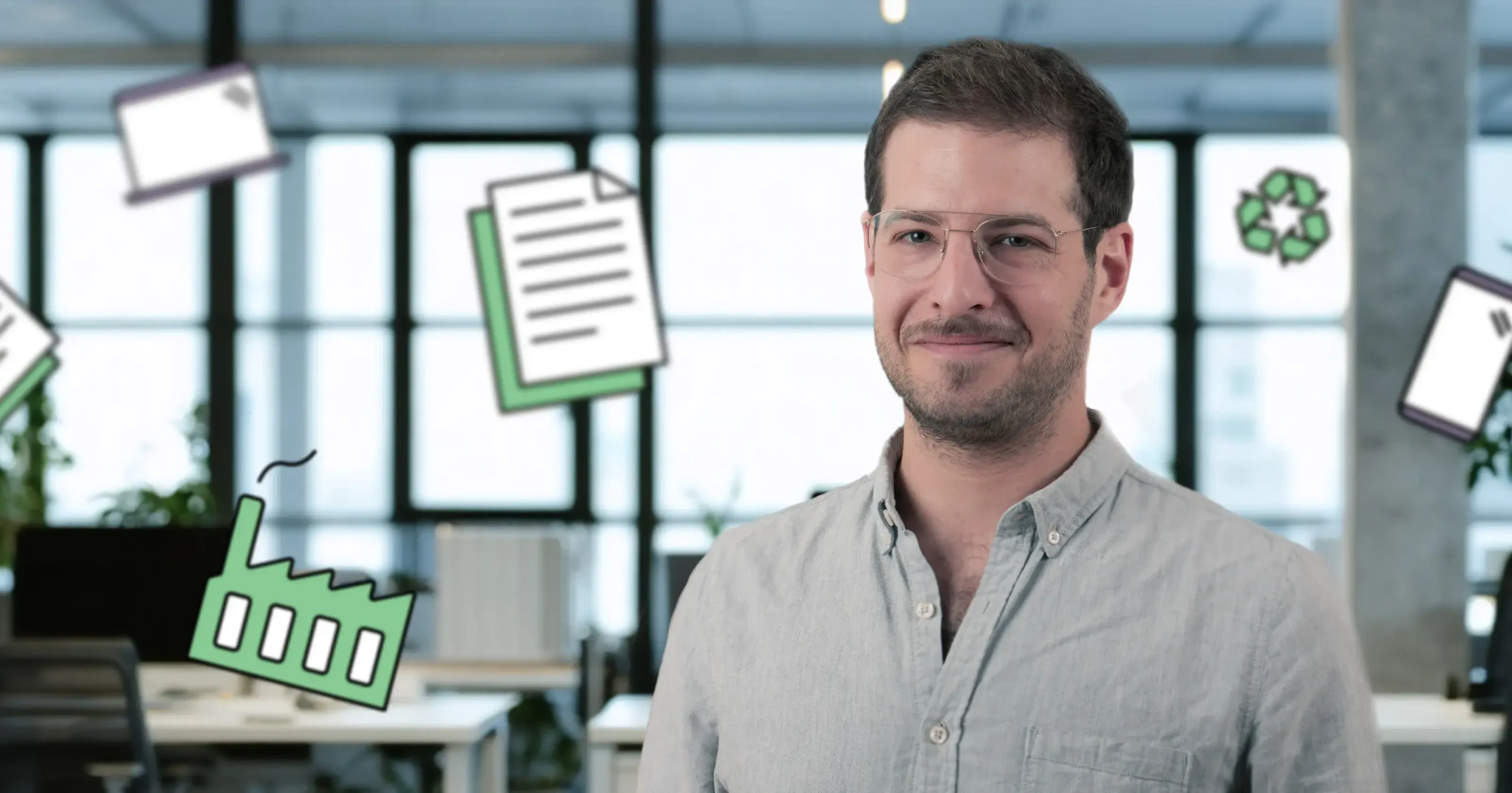In our report Impacts and Insights – Circular IT Management in Practice, we’re deep-diving into circularity. We’ve spoken to experts in the field, checked in with some IT brands and interviewed people on the frontline of circular procurement. Here is a collection of their best tips.
In a circular economy, resources are handled responsibly. The goal is to extend product lifetime and recirculate all materials without producing any waste. What does this actually mean for IT products — and how can the circular economy be implemented on the ground, when you procure and use IT products? Here are 33 hands-on tips that will help you get started with circular IT management. 33 tips may seem like a lot — but keep in mind that sustainability takes time, and the main thing is to get started.
Leverage your purchasing power
1. Make your circularity intentions clear for your suppliers. IT brands know that the circular paradigm shift is coming and a push from clients will help them take the big steps needed.
2. Select a supplier with sustainability ambitions. Common priorities can help support your circular and sustainable IT management goals. Make use of pre-competitive dialogs and RFIs to gather information from suppliers.
3. Include circularity criteria in your procurement policies and specifications. Examples could include durability and repairability criteria that will allow you to keep products longer, and criteria for reduction or elimination of hazardous substances that make materials more recyclable.
4. Purchase products that have already been used. Focus on functionality and make use of the possibilities offered by professional refurbishing and remanufacturing businesses.
5. Don’t overestimate the environmental and financial effects of changing to a more energy efficient device. In most cases, the potential savings are heavily overshadowed by negative impacts in the manufacturing phase.
6. Ask your supplier for an extensive warranty that covers service, repairs and battery replacements during your estimated use time.
Use your IT products longer
7. Use your IT-products longer — it’s the single most important thing you can do to save natural resources and cut greenhouse gas emissions.
8. Think long-term when you purchase an IT product — buy a high-performance product that has enough capacity to meet your needs for several years.
9. Make sure that the products you buy are designed for a long life. They must be durable, upgradeable, and easy to repair.
10. Pay attention to battery life. Mobile IT products are often replaced because the battery has lost its capacity to hold a charge. To extend product life, make sure the battery is of high quality and can be replaced.
11. Extend battery life by keeping the product 20-80 percent charged as often as possible and avoid leaving it in hot spaces.
12. Remember to use the products in a circular manner — repair and upgrade your IT products when needed instead of disposing of them.
Involve the rest of your organization
13. Work to gradually implement circular practices, such as take-back programs, in your own organization.
14. Investigate the current situation thoroughly to identify how and where circular practices can be introduced. A good start can be to interview people involved in IT purchasing and management.
15. Keep an eye out for old habits and policies that stand in the way for circular practices.
16. Be aware of the effects on employees. Engage them and make sure you have a mandate to change their routines.
17. Identify clear incentives — what are the benefits of going circular? It could be cuts in CO2 emissions, better operative results or lower costs for IT management.
18. Cooperation between functions is vital and will help you make faster progress. Invite decision makers and specialists from at least IT, procurement, sustainability, finance, facilities and communication for regular meetings to discuss circularity.
19. Build your arguments by reading up on the sustainability impacts of IT products throughout the supply chain, including climate, extensive use of scarce, natural resources, e-waste, hazardous substances, and social impacts.
20. Make sure that your hazardous e-waste doesn’t end up being illegally exported. Cooperate with a professional waste management firm that handles your end of life products in a safe manner.
21. Categorize people in your organization depending on their IT needs. This will help you optimize the use of devices and find opportunities for product reuse.
22. Accept that change is a process. You need to have a long-term perspective and allow time and space for behavioural changes.
Give your IT products a second life
23. Don’t miss out on the opportunity of additional income — resell IT products once you’re finished using them.
24. Remember that your IT products may have value even if they no longer meet the needs of your organization. Discuss resale options with a reputable refurbishment or remanufacturing firm. Consider also charitable donations or surplus resale to employees.
25. Develop internal policies and routines for the collection of used IT products. For example, avoid distributing new products to users before the old device is handed in.
26. If you want to resell your products, do it as soon as you’ve stopped using them. They lose value each month they are kept in storage.
27. Include chargers and cables when you sell the products — otherwise new chargers need to be manufactured and it reduces the environmental benefits and your income.
28. Protect your data — use software for safe data removal, or ensure that the company that you sell products to will manage this securely.
29. Make sure you deactivate digital systems for data security. Failing to do so makes devices useless on the second-hand market.
Join forces with others
30. Team up with other buyers to increase your purchasing power and influence.
31. If the main aim is to establish a circular economy, there is no way to close loops on your own. You need to partner with stakeholders throughout the life cycle to get things done.
32. Don’t be afraid to reach out for help. Join networks, learn from others, and share what you know.
33. Keep in mind that even the smallest contributions are valuable. It doesn’t matter so much what the first step is as long as you take it.
What is the next step for you? Are you ready to get started? We have put together an easy-to-follow action plan with tips on buying and managing your electronics for the circular economy. Read more and access the action plan here.




